The American Petroleum Institute API 6D Standard – Double-Block-and-Bleed Ball Valves
May 21, 2024
API 6D details three double block categories: DBB (double-block-and-bleed), DIB-1 (Double-isolation-and-bleed type 1), and DIB-2 (Double-isolation-and-bleed type 2).
Trunnion Mounted Ball Valve Seat Designs
Trunnion mounted API 6D ball valves have 2 seats that (one upstream, one downstream) can have a single (SPE) or double piston effect (DPE) seats.
Single Piston Effect (PSE)
Spring loaded seats (uni-directional) are self relieving seats which provide sealing if the upstream pressure
is greater than the cavity pressure, but will automatically relieve pressure (seat springs are set up to 30% as per API 6D-2021 Clause 5.5 over maximum allowable cold working pressure rating of the valve) back up stream (first seat) and downstream (2nd seat) if the cavity pressure is greater than the upstream pressure.
Double Piston Effect (DPE)
Seats (bi-directional) will provide sealing regardless of weather the cavity upstream pressure is higher. A DIB valve can be configured with one (DIB-2) or two (DIB-1) bi-directional seats. A DIB-1 valve provides double isolation from pressure at both ends of the valve, but requires an external relief system to relieve pressure.
A trunnion ball valve can be specified in three different arrangements:
Two SPE’s seats (DBB)
Two DPE’s seats (DIB-1)
One SPE seat and One DPE seat (DIB-2)
These arrangements are classified by API 6D as follows: Double-block-and-bleed (DBB), Double-isolation-and-bleed type 1 (DIB-1), and Double-isolation-and-bleed type 2 (DIB-2).
Double-Block-and-Bleed (DBB)
This is the default standard supplied in the majority of installation referred to.
According to the API 6D-2021 definition, Section 3.1.15 defines a double-block-and-bleed valve as a: “Valve with two or more sealing surfaces that, in the closed position, provides a seal against pressures from both ends of the valve with a means of venting/bleeding the cavity between the seating surfaces.”
The valve is equipped with two SPE seats self relieving. A DBB valve seals from either direction with a bleed between the seats. If the first seal leaks, the second will not seal in the same direction and it does not require an external pressure relief valve. A DBB valve, provides sealing in two different directions, each with a separate seal. However, if the first seal leaks, the second seal will not seal in that same direction. Hence, users can request an optional cavity drain valve be fitted & tested.
For additional safety, tandem twin trunnion ball or twin plug valves are often specified which still have a relatively compact modular design.
Double-Isolation-and-Bleed (DIB)
API 6D-2021 Section 3.1.16 defines a double-isolation-and-bleed valves as a: “Valve with two or more seating surfaces, each of which, in the closed position, provides a seal against pressure from a single source, with a means of venting/bleeding the cavity between the sealing surfaces. This feature can be provided in one direction or in both directions.
The difference is that a double-block-and-bleed valve seals against pressures from both sides of the valve whereas a double-isolation-and-bleed valve provides an additional seal against pressure building in the valve’s cavity.
The DIB-1 configuration has two bi-directional seats one upstream and one downstream. The DIB-2 ball valve design features one bi-directional (DPE) seat and one uni-directional seat (SPE).
DIB-1 valves have DPE seats both upstream and downstream to provide a seal in both directions.
For the DIB-1 configuration, over pressurisation of the cavity is avoided by the use of an external safety relief valve. With the ball in the closed position and pressure on the upstream side, the cavity pressure will increase in case of upstream seat failure. The cavity pressure will cause a double piston effect on the downstream seat creating a second seal on the ball.
For DIB-2 configuration, one seat SPE and the other DPE, an external relief valve is not required as bi-directional the upstream seat will relieve pressure back upstream whilst the uni-directional downstream seat will not allow pressure to relieve down stream which is the main advantage of valve compared to a DBB valve.
DIB-2 must be marked on flange edge to indicate installation position.
For more information on double ball & plug/butterfly double block & bleed/double isolation & bleed CLICK HERE
Types of Double Block & Bleed/Double Isolation & Bleed valves including twin ball/plug, slab gate, trunnion & floating ball, plug, expanding plug & expanding gate CLICK HERE









